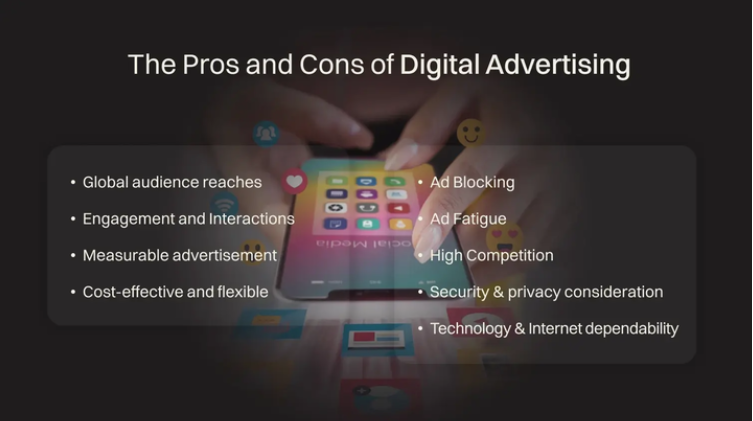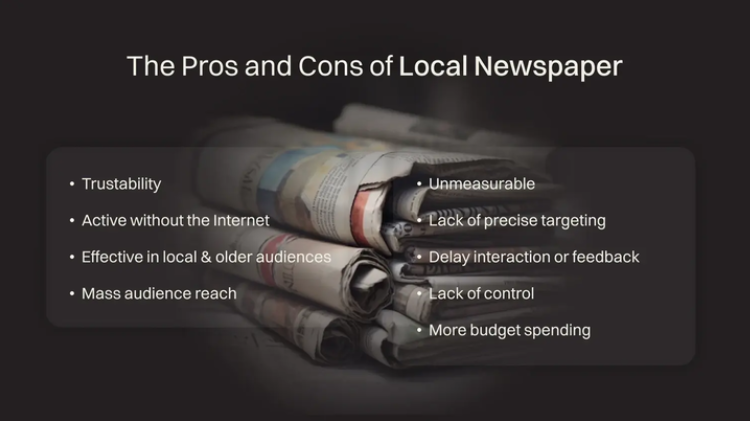
Businesses often try to figure out the best way to invest in marketing between digital and local newspaper advertisements. Better marketing investment is determined by the business budget allocation for the advertisement, target audience, and business goals.
Digital ads use internet-based technology and cloud-based platforms to run ads. SaaS companies like Dialaxy, a cloud-based contact center solutions company, use digital advertising. In comparison, businesses like local museums or older audiences that need a local presence in the community can have better marketing investment with local print ads or traditional marketing.
Read this blog till the end to find out which medium of advertisement is better for your business—also the advantages and disadvantages of digital and local newspaper or traditional marketing.
Understanding the Landscape of Digital Advertising and Local Newspaper Marketing
To understand different aspects of marketing, it’s better to understand the landscape of different marketing types, which helps businesses use the right platforms according to their marketing goals. Digital advertising and local newspaper marketing are unique and important based on business types and target audiences.
Digital marketing includes online or internet resources such as websites, social media, and search engines for advertising. In contrast, local newspapers utilize printing resources such as ink and paper without internet service as a traditional marketing method.
Local newspapers or traditional marketing have the potential to reach a wider geographical audience, where the advertisement can be effective in local areas or broader regions. However, it may be difficult to be more precise when targeting the audience. Due to this, traditional marketing is expensive and difficult to track as uninterested audiences are reached by advertisements.
Digital marketing has the tracking capabilities of the ads and the control according to the specific demographic such as age, gender, interest, and more. The digital advertisement can be tracked according to the reach, conversion, and budget spending, which is impossible in traditional marketing. Since you have control over your marketing campaign, you can customize your ads according to your needs.
The Pros and Cons of Local Newspaper
Traditional newspaper marketing provides a better reach capacity to the older demographic audience in a short time. Let’s take a closer look at the pros and cons of local newspaper marketing or print advertisement:
Pros of Local Newspaper
- Trustability: Individuals trust the ads seen in newspapers more than on the internet. People will likely crosscheck online ads to see if they are true to their nature. At the same time, local newspapers have a reputation and public credibility for publishing true and accurate information.
- Active without the Internet: Print advertisements such as newspapers, magazines, and leaflets can be produced and reach the target audience without Internet service.
- Effective in local and older audiences: Most of the young generation is connected to the internet and actively available online. At the same time, newspapers provide an opportunity to reach older audiences easily because most of them actively read newspapers daily. It is also effective when targeting the local audience as they are trusted in their local areas.
- Mass audience reach: Print advertisements like newspapers help businesses effectively reach a local or mass audience. Traditional marketing and newspapers offer a quick means of distributing information to a large audience since they reach a broader audience, For instance, a national audience.
Cons of Local Newspaper
- Unmeasurable: Local Newspapers or traditional marketing may cover a wider audience but cannot be measured in numbers. With the assumption of audience number, businesses have to depend on conventional marketing.
- Lack of precise targeting: Traditional marketing methods lack precise audience targeting based on interest, age, and gender demographics.
- Delay interaction or feedback: There is slow feedback and interaction with the audience because it takes time to produce and distribute print ads and lacks a direct way to interact.
- Lack of control: Controlling the ad is difficult once published. Customization or personalization of advertising is out of reach after delivering to the audience.
- More budget spending: The number of ad copies you have to publish is uncertain, and they’re wasted if the audience isn’t interested. Also, they are often thrown away by the audience after reading. You cannot test multiple ads as you need to have an allocated budget for testing multiple ads.
The Pros and Cons of Digital Advertising
Most young audiences are active on online platforms such as Google, YouTube, social media, and websites. Businesses reach out to these audiences with digital advertising on Google ads (PPC), Facebook ads (SMM), and other social media platforms. Digital advertisement has numerous advantages and disadvantages.

Pros of Digital Marketing
- Global audience reaches: Internet technology and active online audience presence enable businesses to reach a global audience, breaking down local and international boundaries.
- Engagement and Interactions: Digital marketing closes the gaps between real-time engagement and interactions with targeted customers, which helps address customers’ problems and helps businesses resolve the problem via live communication such as chat support, and customer issue tickets.
- Measurable advertisement: Internet advertisement provides detailed insight and analytics, allowing businesses to monitor their ad campaigns in real-time and make suitable changes. Valuable metrics such as clicks, impressions, engagement, and conversion help businesses calculate their ROI and optimize their marketing campaign.
- Cost-effective and flexible: Online marketing is affordable and flexible, allowing businesses to advertise on a low budget. At the same time, it provides the flexibility of testing multiple ad creatives (A/B testing) and demographic targeting based on interest, age group, gender, and location.
Cons of Digital Marketing
- Ad Blocking: The rise of ad blocker software or ads-blocking applications may prevent the ads from reaching the intended audience, leading to a waste of the ad budget.
- Ad Fatigue: Seeing the same ads regularly and on multiple platforms may create ad fatigue in the audience. Businesses running multiple ads on the internet and displaying them over and over similar ads develop the frustration of advertisement and fatigue.
- High Competition: Most businesses prefer digital platforms to reach their audience, resulting in competition in online advertising platforms making it difficult for businesses to grab the attention of their customer or target audience.
- Consumer privacy concerns: Digital advertising gathers and uses customer data for targeted purposes, which raises security and privacy concerns. Managing privacy restrictions and ensuring compliance are essential to maintaining customer confidence and trust.
- Technology and Internet dependability: Online advertising heavily relies on Internet connections and technology. The business and the audience need access to the Internet and similar platforms.
Comparing Return on investment (ROI): Which provides Better Results – Digital Ads or Local Newspaper Ads?
Local Newspaper ads and old advertisement methods can be costly while marketing in television and other print publications.
No tracking tools are included for calculating the ROI (return on investment) of the reach, engagement, and conversion from the traditional advertising or marketing campaign.
On the other hand, internet and digital ads measure the results of the budget spent on advertisements, from reach, engagement, and lead generation to sales and conversion. Monitoring the real-time flexibility of optimizing the ad budget, ads testing, and the ad creative.
Conclusion
As a result, business goals, target audience, and budget allocation make the major difference when investing in local newspaper ads/traditional ads, or digital advertisements.
Local newspaper ads can be valuable over online advertising for businesses that need to target the local area and older audience and need a physical or visible presence in the community.
Meanwhile, digital ads and marketing provide the dynamic feature of optimizing ads in real-time, reaching multiple locations, establishing a global presence, offering flexibility with demographic target options, and ad campaign performance tracking.
Thus, It is often beneficial for the business to mix both digital and traditional advertising channels for marketing effectiveness, maximizing reach, engagement, and ROI.
Support Northern Colorado Journalism
Show your support for North Forty News by helping us produce more content. It's a kind and simple gesture that will help us continue to bring more content to you.
BONUS - Donors get a link in their receipt to sign up for our once-per-week instant text messaging alert. Get your e-copy of North Forty News the moment it is released!
Click to Donate

